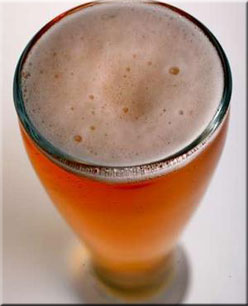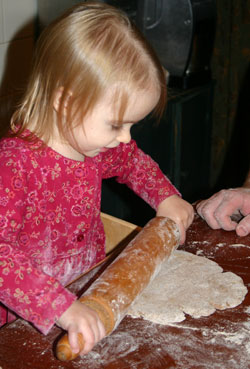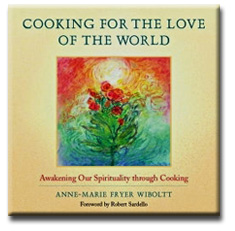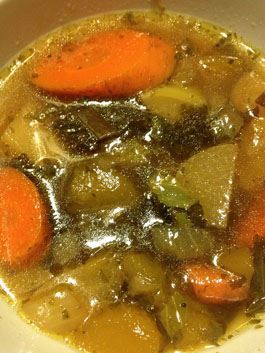I serve some kind of fermented or raw food with each meal. Naturally fermented and cultured foods are an exceptional way to prepare different ingredients and some of the most important side dishes or condiments in our diet. They are often overlooked or not mentioned when we describe what we had for dinner and yet they are pivotal in creating a well-balanced nutritious meal. They add a bounty of nourishing and life promoting substances and forces, almost miraculous curative properties and a wealth of color, flavors and shapes. They increase the appetite, stimulate the digestion and make any simple meal festive and satisfying.
It is an old art to make naturally fermented and cultured foods. They are prepared without the direct use of fire or heat and were an excellent way to preserve food for the times where fresh produce was not available. People of all cultures enjoy fermented and cultured foods. The Greeks pickle olives, Germans turn cabbages into appetizing sauerkraut and the Japanese transform green, immature plums into the tasty medicinal umeboshi plums. Grains and beans are cultured in the Far East creating the now well-known nutritious miso and tamari soy sauce. Indonesia families culture soybeans to create tempeh. In many places of the world people ferment grains or fruit into vine, beer or vinegars. Everywhere flours of various grains are traditionally leavened with sourdough to create delicious breads. From Scandinavia and Russia came the tasty drinks kvass and kombucha, which kept young and old healthy and satisfied the need for fresh foods throughout the long winters. Many societies in the world culture the dairy of animals to make yogurt, butter, kefir and cheese.
The most significant aspects of these foods are found in the process in which they are made. The fermentation or culturing process is more important than the foods that are fermented. When green cabbage is shredded and placed under pressure with a little sea salt, the liquids are extracted from the cabbage. In this liquid ethereal life forces and gases are freed. While the cabbage mixture increases in temperature, chemical interactions take place and substances transform. The matured and finished sauerkraut, has become an individual unique food with an inner liveliness, flavor and aroma completely its own. A whole new product has been created consisting of 'magical' living microorganisms and an abundance of nutritious substances and forces. The microorganisms in the sauerkraut, the lacto bacilli, create not only flavors and textures they also produce an environment wherein 'unwanted bacteria' can not live and therefore the foods are preserved instead of rotting.
It is relatively simple to ferment or pickle vegetable foods. They can be ready in a few hours or in a few days and others, like miso, can take years to mature. The different pickles and fermented foods have different properties, effects, flavors and consistency. Some are more sour, some salty, some crispy and some soft, some are strengthening and warming, others loosening and cooling. If for example a heavier meal is served with fried foods and well-cooked dishes a lighter, cooling fermented food is preferred to balance the meal.
Light Vegetable Soup with Dill
Frying vegetables before cooking them in a soup brings out their sweetness and creates a more warming dish.
2 teaspoons dark roasted sesame oil or extra virgin olive oil
1/2 cup leeks, washed well, cut thinly on the diagonal
1/2 cup carrot cut in fine matchsticks
1 quart water or light soup stock
1-2 tablespoons barley or rice miso to taste
4 tablespoons of dill, cut very fine
Heat a soup pot, add oil and sauté the leeks for a minute. Add carrots and sauté for 2 minutes.
Add water or light stock and let simmer for 7 minutes.
Dilute and puree miso in a little soup water before adding it to the pot. Let it simmer a few minutes.
Serve the soup in individual bowls garnished with fresh dill.
Here is another delicious Salmon Miso Soup recipe complete with step-by-step pictures and detailed instructions:
https://www.jenreviews.com/miso-soup/

Anne-Marie Fryer Wiboltt is a Waldorf class and kindergarten teacher, biodynamic farmer, author and nutritional counselor. She has taught nutritional cooking and counseled for 25 years in her homeland Denmark, Europe and the United States.
She trained as a macrobiotic cooking teacher and counselor and studied the principles of oriental medicine and the research of Dr. Weston A. Price before embracing the anthroposophical approach to nutrition, food and cooking.
This Four week course will explore some of the many benefits of fermented and cultured foods,

and why it is important to include them regularly with every meal. You will be guided through the steps of making sauerkraut, kimchi, pickled vegetables, kefir, soft cheese, and yogurt, as well as get a chance to discover new fermented drinks such as kvass, wines, and beers. I will aim at answering personal questions around your culturing and fermenting experiences.
Intuitively we know that cultured and fermented foods are real health foods. Naturally fermented and cultured foods are an exceptional way to prepare different ingredients and some of the most important side dishes and condiments in our diet. They are often overlooked or not mentioned when we describe what we had for dinner, and yet they are pivotal in creating a well-balanced, nutritious meal.
They add a bounty of nourishing, life-promoting substances and life forces, almost miraculous curative properties, and a wealth of colors, flavors, and shapes. They increase the appetite, stimulate the digestion, and make any simple meal festive and satisfying. The course will be highly practical with many hands-on activities.

In this Four week course you will learn about the nutritional needs of your growing child and receive delicious, seasonal, wholesome nutritious menus and recipes on affordable budget so as to encourage children to eat and live healthy.
During this course we will explore the nutritious needs for your growing child.
We will discover how rhythm, simplicity and nourishing activities support a healthy child development. You will find new ways to encourage your child to develop a taste for natural, wholesome foods as well as receive and create delicious, seasonal nutritious menus and recipes that stay within the limits of your budget.
Cooking for the Love of the World:
Awakening our Spirituality through Cooking
by Anne-Marie Fryer Wiboltt

A heart-centered, warmth-filled guide to the nurturing art of cooking. 200 pages, softbound

 The Wise Woman University (WWU) is a sacred distance learning environment for the reweaving of the healing cloak of the Ancients.
The Wise Woman University (WWU) is a sacred distance learning environment for the reweaving of the healing cloak of the Ancients.
 Anne-Marie Fryer Wiboltt is a Waldorf class and kindergarten teacher, biodynamic farmer, author and nutritional counselor. She has taught nutritional cooking and counseled for 25 years in her homeland Denmark, Europe and the United States.
Anne-Marie Fryer Wiboltt is a Waldorf class and kindergarten teacher, biodynamic farmer, author and nutritional counselor. She has taught nutritional cooking and counseled for 25 years in her homeland Denmark, Europe and the United States. and why it is important to include them regularly with every meal. You will be guided through the steps of making sauerkraut, kimchi, pickled vegetables, kefir, soft cheese, and yogurt, as well as get a chance to discover new fermented drinks such as kvass, wines, and beers. I will aim at answering personal questions around your culturing and fermenting experiences.
and why it is important to include them regularly with every meal. You will be guided through the steps of making sauerkraut, kimchi, pickled vegetables, kefir, soft cheese, and yogurt, as well as get a chance to discover new fermented drinks such as kvass, wines, and beers. I will aim at answering personal questions around your culturing and fermenting experiences. In this Four week course you will learn about the nutritional needs of your growing child and receive delicious, seasonal, wholesome nutritious menus and recipes on affordable budget so as to encourage children to eat and live healthy.
In this Four week course you will learn about the nutritional needs of your growing child and receive delicious, seasonal, wholesome nutritious menus and recipes on affordable budget so as to encourage children to eat and live healthy.

